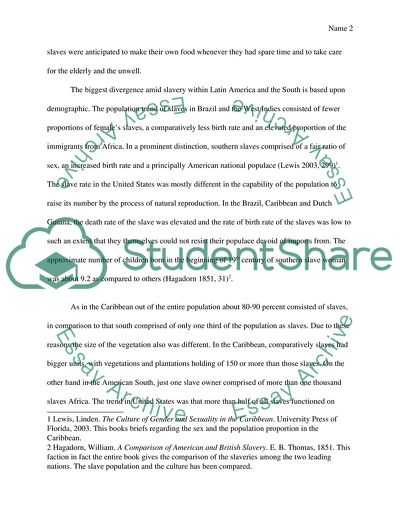Cite this document
(Difference of Treatment between American Slaves and British Slaves Article Example | Topics and Well Written Essays - 1500 words - 1, n.d.)
Difference of Treatment between American Slaves and British Slaves Article Example | Topics and Well Written Essays - 1500 words - 1. https://studentshare.org/history/1804896-difference-of-treatment-between-american-slaves-and-british-slaves-british-slaves-in-the-caribbean
Difference of Treatment between American Slaves and British Slaves Article Example | Topics and Well Written Essays - 1500 words - 1. https://studentshare.org/history/1804896-difference-of-treatment-between-american-slaves-and-british-slaves-british-slaves-in-the-caribbean
(Difference of Treatment Between American Slaves and British Slaves Article Example | Topics and Well Written Essays - 1500 Words - 1)
Difference of Treatment Between American Slaves and British Slaves Article Example | Topics and Well Written Essays - 1500 Words - 1. https://studentshare.org/history/1804896-difference-of-treatment-between-american-slaves-and-british-slaves-british-slaves-in-the-caribbean.
Difference of Treatment Between American Slaves and British Slaves Article Example | Topics and Well Written Essays - 1500 Words - 1. https://studentshare.org/history/1804896-difference-of-treatment-between-american-slaves-and-british-slaves-british-slaves-in-the-caribbean.
“Difference of Treatment Between American Slaves and British Slaves Article Example | Topics and Well Written Essays - 1500 Words - 1”. https://studentshare.org/history/1804896-difference-of-treatment-between-american-slaves-and-british-slaves-british-slaves-in-the-caribbean.


